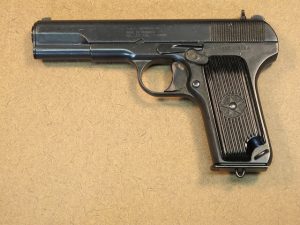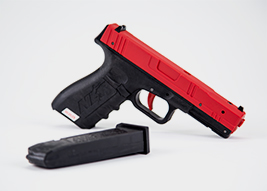Recently I had occasion to test fire a Glock 10mm pistol, the Glock 20 Gen 4. While I am normally lukewarm toward Glocks, I’ll have to say this was a great experience. They have recently re-engineered the recoil spring into a triple spring, and it does a stellar job of mitigating recoil, so that this beast was only a little more stout than a .45.
Some years ago, some FBI agents were involved in a shootout in which several agents were killed, and the investigation revealed that if the criminal’s wounds had had a little more penetration, the battle might have been stopped sooner. As a response, the FBI upgraded to the 10mm as a standard issue. Several years of experience showed the agents were too often unable to qualify on those guns, so they recently downgraded back to the 9mm. The theory is that the ability to rapidly reacquire the target and make follow-up shots trumped stopping power. Critics of this change have suggested that the real problem is that many FBI agents come from a background of law or accounting, and were not properly trained with handguns. The U.S. military changed a few years ago from the traditional .45 sidearm (various versions of the Browning 1911) to the 9mm, and the results have been mixed. While it is true that magazine capacity is increased, many soldiers in the Iraq/Afghanistan wars have complained about the stopping power of the 9mm, especially at distances greater than 30 yards.
Ballistics: 9mm vs .45 vs 10mm
At this point, some physics is required. Stopping power is not a function of caliber alone, but of energy transfer. The greater force applied to the target, the quicker he is stopped. Energy transfer is mass X velocity (E=m*v), so a lighter bullet traveling faster can impart the same energy transfer as a heavier bullet traveling slower. The .45, due to its weight and defined case pressure, travels relatively slowly, and has a fair amount of bullet drop after 50 yards. Many police departments have changed to either the .40 or .357 SIG, because the lighter bullets and higher case pressures result in more energy transfer over longer distances. The Soviets (experts at killing) figured this out in 1930; the famous Tokarev pistol (7.65×25) used a bullet smaller than a modern .32, but traveling at warp speeds. It would drop a man at 100 yards.

Romanian Tokarev, c. 1955
The 10mm cartridge captures the best of both worlds. While the bore is only equivalent to a .40 cal, the weight of 180-200 grains is closer to a .45. The increase in power comes from a much longer case, more powder, and higher case pressures. Penetration tests on a gel block measured 24 inches, which is about 10 inches more than a .357 Magnum.
Self Defense in the Forest
Several times, students have told me that they were interested in a handgun for hiking or camping; one that could protect them from wolves, boars, or bears, as well as the traditional two-legged varmints. I was previously of the opinion that, unless one was strong enough to handle a .44 Magnum, the obvious choices were the .45 Semi, or .357 Magnum revolver. While those are both show-stoppers, I would have to now add the 10mm to that list. If that won’t stop the threat, then you had better be able to climb a tall tree!
 Glock 20, Gen 4
Glock 20, Gen 4


